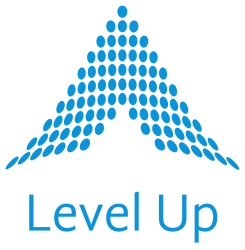Part 2 of 3 on “Becoming Cloud Native: What to do when your public sector organization WASN’T born in the cloud”.
In the second of a 3-video overview which is specifically focused on addressing the unique cloud and automation goals and challenges of state/local agencies as well as higher education, Red Hat Inc. systems integrator partner Level Up Technology covers Pro Tips 6-10, all learned by Chief Architect Daniel Goosen over about a decade’s experience in enterprise DevOps and Cloud environments.
PRO TIPS (6-10):
6.) “Let the platform do the hard stuff”
7.) Don’t just containerize your microservices, orchestrate them
8.) Realize that your legacy apps can go faster too
9.) Build or buy? It’s actually both
10.) Don’t go it alone 6. LET THE PLATFORM DO THE HARD STUFF *9 Patterns and 1 Antipattern* Note: Includes highlights from “Cloud Architecture Patterns” by Bill Wilder (see also: http://shop.oreilly.com/product/0636920023777.do)
1.) Horizontal scale
2.) Containers
3.) Network is not an infinite resource
4.) Ephemerality
5.) Queue-centrism
6.) Transient failures shouldn’t degrade UX
7.) Eventual consistency
8.) Cache the right data in the right places at the right times
9.) Cloud readiness
10.) “Let the platform do the hard stuff”: reliability and scalability, etc. AWS Well-Architected Framework Pillars – highlights:
(see also: https://aws.amazon.com/blogs/apn/the-5-pillars-of-the-aws-well-architected-framework/)
Ops: -Perform operations as code -Make frequent, small, reversible changes
Security: -Automate security best practices
Reliability: -Test recovery procedures -Automatically recover from failure Manage change in automation
Performance: -Go global in minutes -Experiment more often
7. DON’T JUST CONTAINERIZE YOUR MICROSERVICES, ORCHESTRATE THEM *A Cambrian-Like Explosion of Containers* Enterprise-Grade Container Orchestration means: -Cloud-agnostic -K8S-based -API-driven -Self service-oriented -Advanced networking support -Service discovery -Heterogeneous persistent storage support -Secure by design and by default -App centric point of view
8. REALIZE THAT YOUR LEGACY APPS CAN GO FASTER TOO “Speed Existing Apps Using Fast Monoliths” (see also: https://www.redhat.com/cms/managed-files/mi-path-to-cloud-native-apps-ebook-f12255cs-201805-en_0.pdf) -Legacy apps are a hard reality -Should be integrated at some point -Goal should be to move the monolithic architecture to a more modular one +service-based +API-based +Consider containerizing the monolith if nothing else
9. BUILD OR BUY? IT’S ACTUALLY BOTH *Spoiler Alert: No Single Tool is Ever Going to Solve All Your Problems* -Keyword: Integration -Reality check: It’s always actually build vs. buy… vs. the status quo -Divide and conquer: The work that gives your company a competitive advantage vs. everything else -Remember: It’s your company, your cloud, your rules
10. DON’T GO IT ALONE *No One Team (Let Alone One Cloud Engineer) Can Do All of This By Themselves!* (see also: https://www.amazon.com/Cloud-Transformation-Maturity-Model-Whitepaper-ebook/dp/B01M3R74A9) -Another eye chart/benchmark: AWS Cloud Transformation Maturity Model -Pre-optimize upfront and continuously +How will you optimize for cost? +How you optimize services? +How you optimize apps? +How you optimize ent services? -Leaders: Automation is the only way to ensure that future optimizations WILL actually happen
SUBSCRIBE to our YouTube channel to get more info on all things cloud native!
